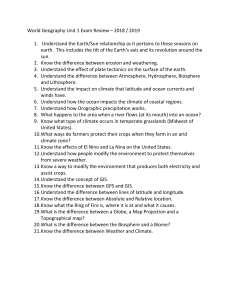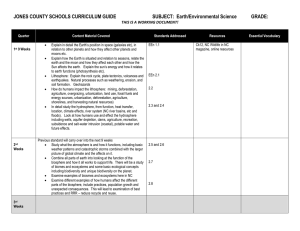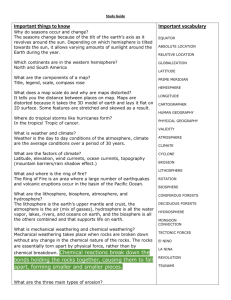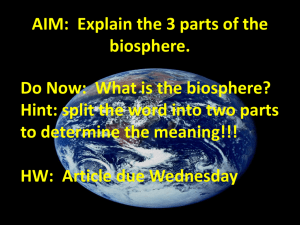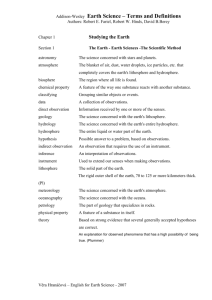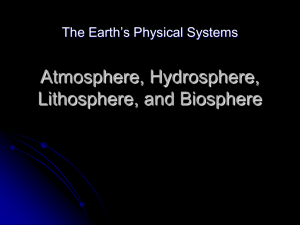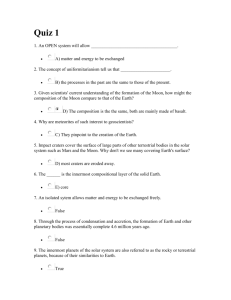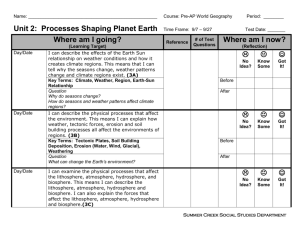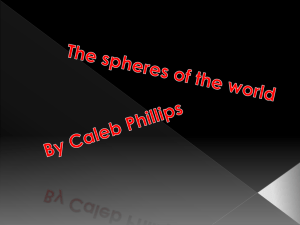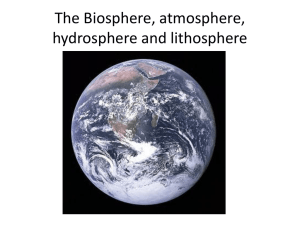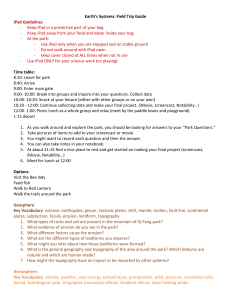Geographer`s Tools Test Review
advertisement
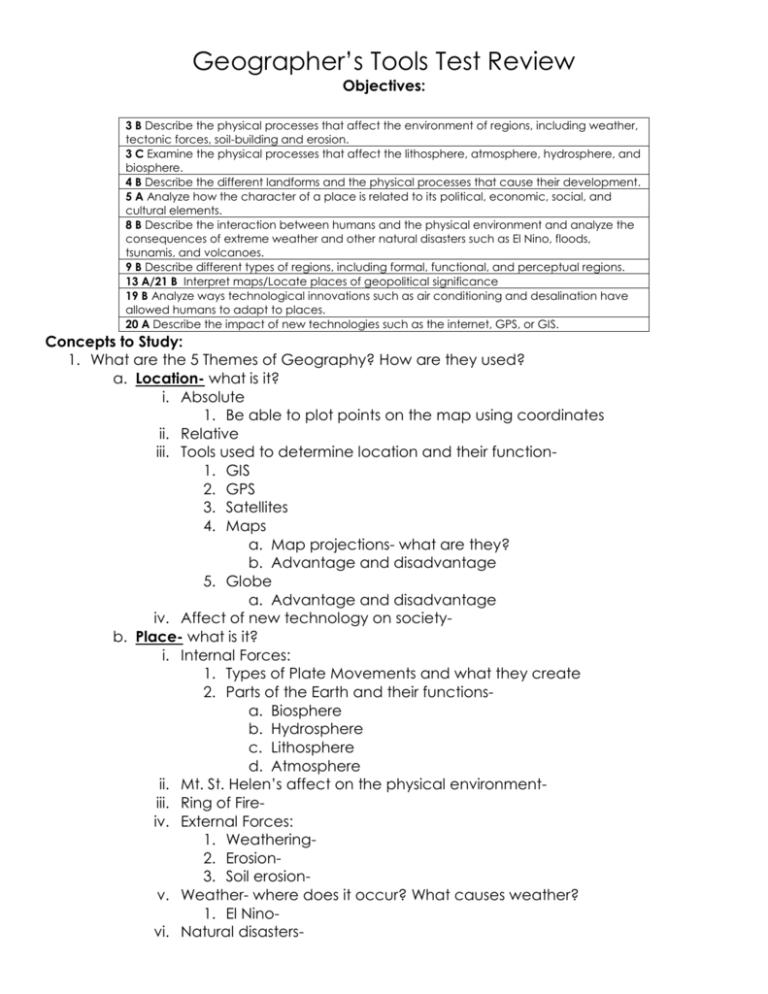
Geographer’s Tools Test Review Objectives: 3 B Describe the physical processes that affect the environment of regions, including weather, tectonic forces, soil-building and erosion. 3 C Examine the physical processes that affect the lithosphere, atmosphere, hydrosphere, and biosphere. 4 B Describe the different landforms and the physical processes that cause their development. 5 A Analyze how the character of a place is related to its political, economic, social, and cultural elements. 8 B Describe the interaction between humans and the physical environment and analyze the consequences of extreme weather and other natural disasters such as El Nino, floods, tsunamis, and volcanoes. 9 B Describe different types of regions, including formal, functional, and perceptual regions. 13 A/21 B Interpret maps/Locate places of geopolitical significance 19 B Analyze ways technological innovations such as air conditioning and desalination have allowed humans to adapt to places. 20 A Describe the impact of new technologies such as the internet, GPS, or GIS. Concepts to Study: 1. What are the 5 Themes of Geography? How are they used? a. Location- what is it? i. Absolute 1. Be able to plot points on the map using coordinates ii. Relative iii. Tools used to determine location and their function1. GIS 2. GPS 3. Satellites 4. Maps a. Map projections- what are they? b. Advantage and disadvantage 5. Globe a. Advantage and disadvantage iv. Affect of new technology on societyb. Place- what is it? i. Internal Forces: 1. Types of Plate Movements and what they create 2. Parts of the Earth and their functionsa. Biosphere b. Hydrosphere c. Lithosphere d. Atmosphere ii. Mt. St. Helen’s affect on the physical environmentiii. Ring of Fireiv. External Forces: 1. Weathering2. Erosion3. Soil erosionv. Weather- where does it occur? What causes weather? 1. El Ninovi. Natural disasters- c. Human Environment Interaction- what is it? i. Examples of how people interact with/adapt to their environmentii. Adapting to the Ring of Fire iii. Storm of 1900 and the Seawall d. Region- what is it? i. Formal: what is it? Give example. ii. Functional: What is it? Give example. iii. Perceptual: What is it? Give example. e. Movement- what is it? i. Examples of movement ii. Types of distance to measure movement 1. 2. 3. Vocabulary to know and be able to apply: Weathering Fault Absolute location GPS Physical map Tsunami Geologist Atmosphere Prime Meridian Functional region Water cycle erosion convergent relative location GIS thematic map volcano cartographer biosphere equator Ring of Fire Great Circle Route wind erosion divergent map projections satellites external force earthquake El Nino lithosphere perceptual region suburb water erosion transform globe political map internal force seismic monitor weather hydrosphere formal region meteorologist
